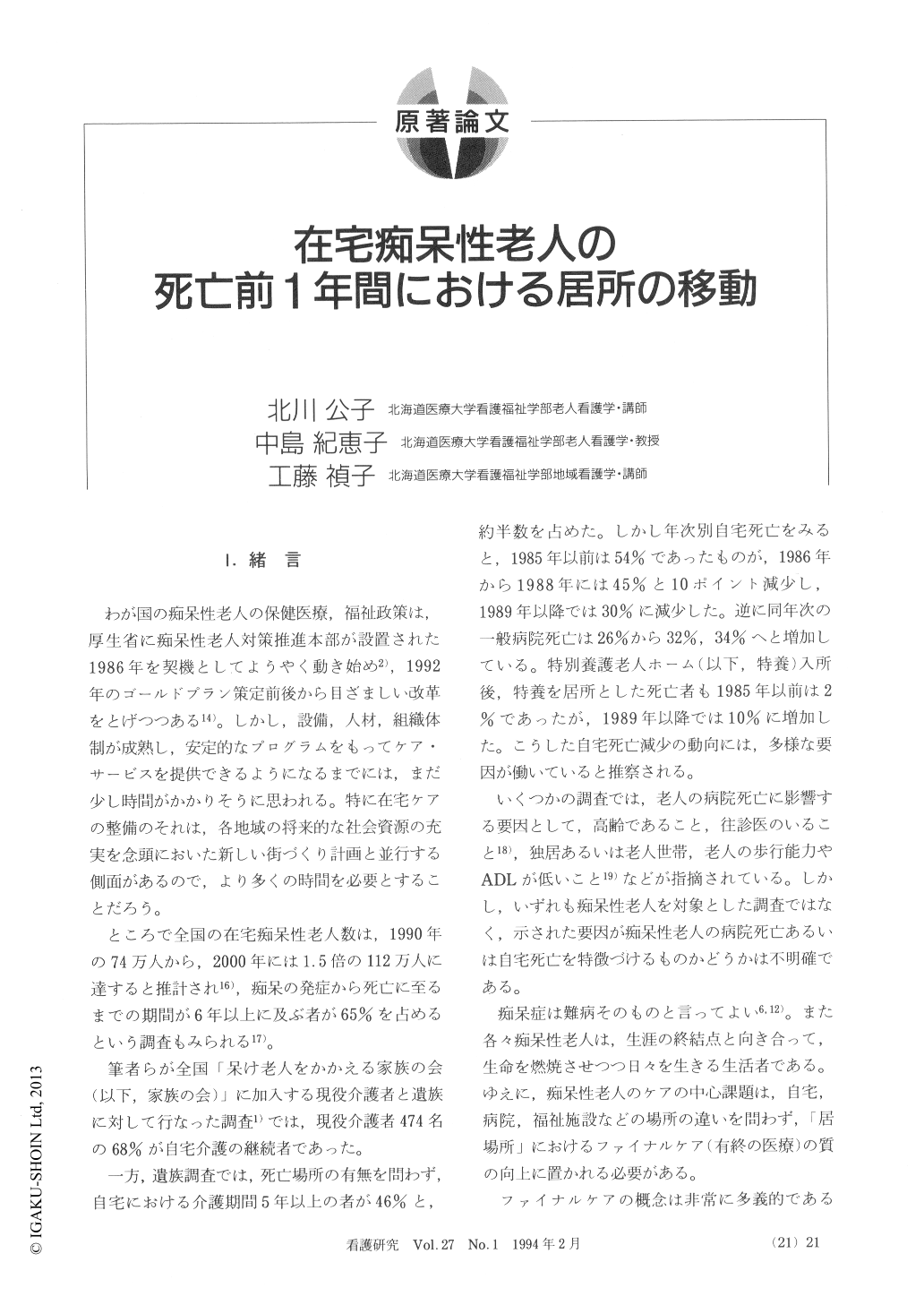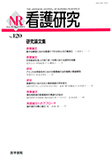Japanese
English
- 有料閲覧
- Abstract 文献概要
- 1ページ目 Look Inside
- サイト内被引用 Cited by
1.緒 言
わが国の痴呆性老人の保健医療,福祉政策は,厚生省に痴呆性老人対策推進本部が設置された1986年を契機としてようやく動き始め2),1992年のゴールドプラン策定前後から目ざましい改革をとげつつある14)。しかし,設備,人材,組織体制が成熟し,安定的なプログラムをもってケア・サービスを提供できるようになるまでには,まだ少し時間がかかりそうに思われる。特に在宅ケアの整備のそれは,各地域の将来的な社会資源の充実を念頭においた新しい街づくり計画と並行する側面があるので,より多くの時間を必要とすることだろう。
ところで全国の在宅痴呆性老人数は,1990年の74万人から,2000年には1.5倍の112万人に達すると推計され16),痴呆の発症から死亡に至るまでの期間が6年以上に及ぶ者が65%を占めるという調査もみられる17)。
The purpose of this study was to clarify what factors were affecting the residential movement of persons with senile dementia, within one year prior to their death, and to find out ways to sustain the quality of life of the terminal period. We analyzed ninety-six cases of the members of the Association of Family Caring for the Demented Elderly, who died within the period from 1989 to 1991.
1. The average age of death of the elderly persons was 83.2 years. Seventy-four percent had severe dementia. Fifty-five percent had complications of cancer, cardiopathy or apoplexy.

Copyright © 1994, Igaku-Shoin Ltd. All rights reserved.


